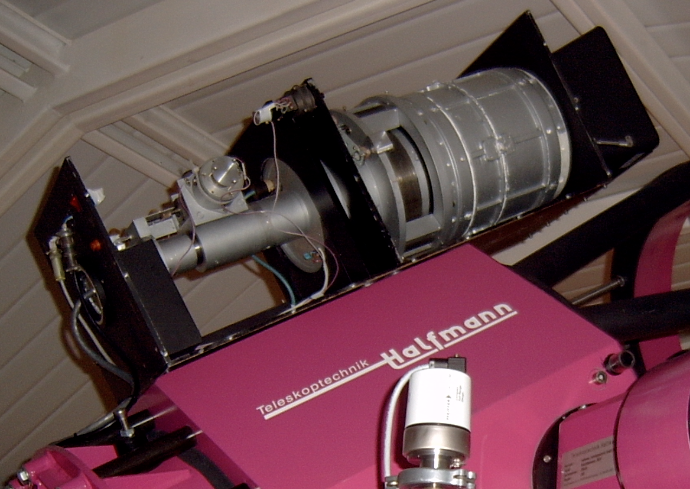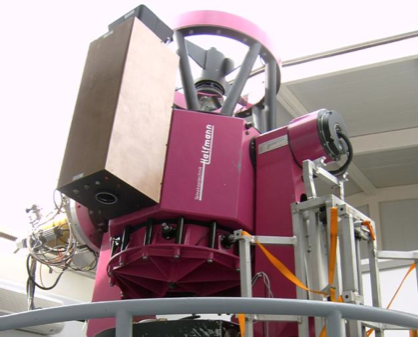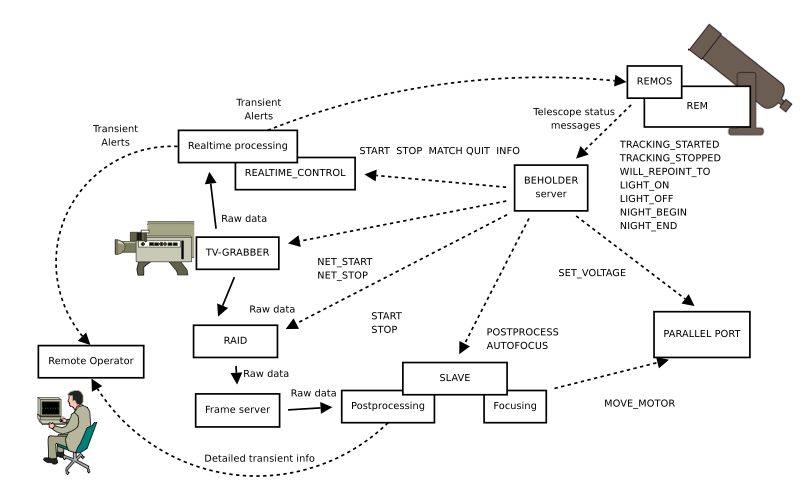| TORTORA
|
|---|
| Main Objective
| | Diameter | 120 mm mirror
| | Focal length | 150mm
| | Focal ratio | 1/1.2
| | Image intensifier
| | Photocathode | S20
| | Diameter | 90 mm
| | Gain | 150
| | Scaling factor | 5.5
| | Quantum efficiency | 10%
|
|
|
|
|
|---|
| Field of view | 24ˆx32ˆ
| | Time resolution | 0.13"
| | CCD Matrix
| | Model | VS-CTT285-2001
| | Frame size | 1388 x 1036
| | Pixel scale | 81"/pix
| | Exposure | 0.13 sec
| | Pixel size | 6.5 μm
| | Read-out noise | 6 e/pix
| | Star FWHM | 2.7'
|
|




